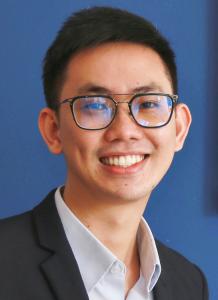ASEAN’s development, in retrospect, can be categorized into four main phases. The first, from 1967 to 1978, was known as the inception and solidarity forming period. The five founding ASEAN states had reached common ground on the initial inception of the regional grouping. The second, from 1977 to 1999, was known as the membership expansion period, which saw the regional grouping grow from five to ten members by 1999. The third, from 1998 to 2007, was the formalization and vision-setting period. During this time, ASEAN established the Bali Concord II and initiated discussion on the creation of the ASEAN Community in 2003, while also adopting its first-ever legal document, known as the ASEAN Charter, in 2007. This document outlined the fundamental principles for member states, legal status, institutional frameworks and other governance structures of ASEAN.
Looking back, despite some internal disputes, ASEAN has achieved a reputation for maintaining regional peace and stability in Southeast Asia for more than five decades. Amitav Acharya for example has labelled ASEAN “a durable regional grouping in the developing world” (Acharya 2013). Such praise is generous but not without reason.
First, ASEAN managed to convince all of its member states to adopt the organization’s core principle, the “ASEAN Way”. The ASEAN Way creates a culture of consultation and consensus diplomacy, norms which have enabled ASEAN to solve many problems peacefully over the last five decades. Amitav Acharya defined this type of diplomacy as “a high degree of discreteness, informality, pragmatism, expediency, consensus building, and non-confrontational bargaining styles, which are often contrasted with the adversarial posturing and legalistic decision-making procedures in Western multilateral negotiations’’ (Acharya 1997).
Second, the sometimes criticized “non-intervention” policy, which ASEAN has embraced for several decades, has also proven to be useful for the region. The West views it as a fragile policy, slowing the regional integration process and downgrading ASEAN’s reputation for solving political-security issues. Nonetheless, ASEAN’s rejection of such criticism proves that it can maintain peace and prevent its member states from using force to solve regional conflicts (Mahbubani and Severino 2014). In other words, the practice of non-intervention engages ASEAN’s method of quiet diplomacy and the ASEAN Troika. Though it has not been completely effective in solving regional conflicts since ASEAN’s inception, the chance of war breaking out in the region is lower as a result.
Third, ASEAN has shown its support for multilateral diplomacy and commitment to building a peaceful, rules-based regional order. This can be seen for example in the establishment of the ASEAN Regional Forum (ARF) for political-security matters in 1994 and the ASEAN Plus Three to engage East Asian powers, namely Japan, China, and South Korea, in the aftermath of the Asian Financial Crisis in 1997.
These developments were followed by other initiatives, such as the East Asia Summit in 2005 and the ASEAN Defence Ministers’ Meeting Plus (ADMM Plus) in Hanoi in 2010, just to mention a few. In all of these meetings, ASEAN discussed various topics with major powers, including regional security, economic and trade cooperation, health, and environmental issues (Ibid.). These achievements highlighted ASEAN’s effort towards the realization of the ASEAN Community Vision 2025, a people-centred and people-oriented regional community that makes the region more politically cohesive, economically prosperous, and socially harmonious.
But ASEAN Community building goes well beyond the achievements mentioned above. Currently, building a people-oriented and people-centred ASEAN Community is one of the main priorities for ASEAN. In fact, during its inception period, ASEAN merely resembled a group of allies coming together to contain the spread of communism in the region. However, in the present context, the group’s raison d’etre has shifted away from such a limited initial purpose. With globalization, free trade and greater economic integration becoming dominant forces in the post-Cold War era, the idea of building an “ASEAN Community” first gained attention in the Bali Concord II in 2003.The concord defined the ASEAN Community as a “Community of Opportunities” for all ASEAN peoples, one which is “closely intertwined and mutually reinforcing [to ensure] durable peace, stability, and shared prosperity in their region” (ASEAN Secretariat 2012).
The ASEAN Community comprises of three main pillars, namely the ASEAN Political-Security Community (APSC), the ASEAN Economic Community (AEC), and the ASEAN Social-Cultural Community (ASCC). ASEAN’s efforts in building a greater sense of a common identity reflect the member states’ shared objective in enhancing the well-being of ASEAN people through promoting socio-economic development, maintaining regional peace and stability, and enhancing the prosperity of respective societies in Southeast Asia.
The ASEAN Charter elaborates the significance of the “inclusiveness of the community”, stating that all sectors of ASEAN societies shall put more effort into regional integration and community building (Seksan Anantasirikiat 2021). For several decades, ASEAN has been seen as a top-down intergovernmental organization. The leaders at the top are the main decision makers regarding the realization of the ASEAN Community. Some argued that this so-called top-down approach might not be effective in promoting a “Community for all”. The question therefore is whether such a conceptualization of the ASEAN Community is inclusive enough for its citizens? What are the opportunities and challenges facing ASEAN in building a people-oriented and people-centred community? Do ASEAN leaders ever think of youth participation as an important component in developing such a community? Does youth diplomacy have a crucial role to play in the process of ASEAN Community building?




